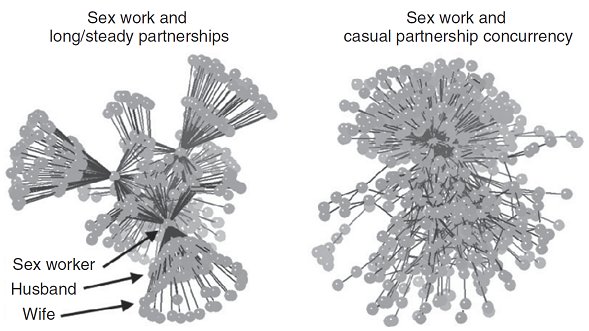Sexually transmitted infections
This chapter continues with the theme of contact patterns, this time with how they influence the transmission and control of sexually transmitted infections (STIs). Specifically, it describes how models predict that without the presence of a risk heterogeneity short-duration STIs would be unlikely to persist in populations. This has important implications for STI control, suggesting that control can best be achieved by targeting core groups. It goes on to describe simple HIV models and the use of network models in STI epidemiology.

Example of two emergent sexual networks created using the individual-based stochastic model STDSIM. Circles represent people and lines represent sexual relationships. The network on the left was created by modelling sex work and long-term (marital) partnerships. The network on the right was created by modelling sex work and casual partnership concurrency. Figure courtesy of Roel Bakker, Erasmus MC, Rotterdam.
Creating networks like these help us understand how different relationship patterns may affect the spread and control of sexually transmitted infections.
